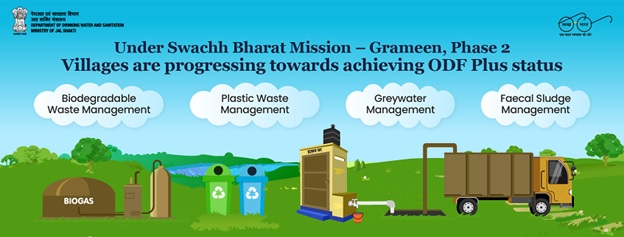7667766266
enquiry@shankarias.in
The government needs to identify the shortcomings in Swachh Bharat Mission-Gramin if it wants to transform India from open defecation free to open defecation free-plus status by 2024-25.
|
Status of sanitation in India |
|
Sustainable Development Goal (SDG 6) aims to ensure availability and sustainable management of water and sanitation for all.
The target for reaching total sanitation was revised from 2012 to 2022.

|
Surveyed States in 2018 |
Toilet access |
Atleast one member who did not use |
|
Bihar |
59% |
38% |
|
Gujarat |
66% |
50% |
|
Telangana |
76% |
14% |
References